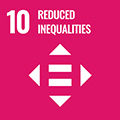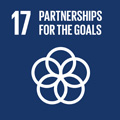- Docente: Sofia Pescarin
- Credits: 6
- SSD: INF/01
- Language: English
- Teaching Mode: Traditional lectures
- Campus: Bologna
- Corso: Second cycle degree programme (LM) in Digital Humanities and Digital Knowledge (cod. 9224)
Learning outcomes
At the end of the course students are put in touch with the intangible cultural heritage mediated by computer science and expressed under the form of practices, representations and skills that the multimedia research community recognizes as part of its identity. Students are able to reflect upon and manipulate a variety of digital instruments, including objects, artifacts and cultural spaces, manifested through interactive multimedia signs and actions.
Course contents
Interaction Media Design focuses on the design of interactive applications in the humanities and specifically in the domain of Cultural Heritage. During the course, media are treated (images, audio, video, 3d, etc.), together with their acquisition and processing. Main design principles are discussed in relation with CH and cognitive sciences.
The course is divided into topics. Each topic starts with the exploration of a relevant multimedia application, developed at International level in the last years. An analysis follows, through which students will be able to decompose each example into single digital elements and understand their basics, how to acquire and process them. A further analysis is than carried out on the use of tools, software and ICT infrastructure needed to build a multimedia project and finally an exercise is selected and developed by students . During these process students will enrich their vocabulary learning of images, audio, video, 3d models (both reality-based and computer-graphic/source-based), geospatial vector and raster dataset (including remote sensing)
It is suggested to study autonomously the basics of a 3d modelling software, such as Blender (Tutorial on line).
- raster and vector
- vector graphics
- GIS
- digital Photos
- digital Panoramas
- photogrammetry
- 3d models
- computer animation
- interaction
- vr and ar (applied games)
- design principles
- cognition and virtual heritage
- digital heritage applications
Readings/Bibliography
- Benyon D., Designing Interactive Systems: A comprehensive guide to HCI, UX and interaction design
- Hornecker, E., & Ciolfi, L. (2019). Human-computer interactions in museums. Synthesis Lectures on Human-Centered Informatics, 12(2), i-171.
- Ansel A., The Camera, Little Brown and Company New York, pp. 44-93
- Remondino F., El-Hakim S. (2006). Photogrammetric Record, 21(115), pp. 269-291
- S. Pescarin, Esperienze interattive nei musei: dieci regole d'oro, in Videogames, Ricerca, Patrimonio Culturale, 2020, Franco Angeli editore (volume open access scaricabile https://www.francoangeli.it/Ricerca/scheda_libro.aspx?Id=26444)
- S. Pescarin, Museums and Virtual Museums in Europe: Reaching expectations. In SCIRES-IT (2014)
- Notes from the lectures
Assessment methods
The exam is divided in 2 parts: 1) a written or oral part (in accordance with the covid situation) where to each of the students will be asked to answer to questions related to technical concepts (a. file formats, software, hardware, b. processes and methods, c. design and theory) and 2) a second oral part where groups will present a brief of their design ideas, with specification of multimedia file, software and processes needed to create the final product. (It is not required to build the final product, although the presentation of a prototype will be considered as a plus).
Teaching tools
The lectures includes exercises on specific software and brainstorming design sessions aimed at the definition of the Project Work.
The Software:
GIMP
INKSCAPE
RAWTHERAPEE
QUANTUM GIS
PTGUI
HITFILM
A PHOTOGRAMMETRY SOFTWARE (Photoscan, Zephyr or Regard3d)
Office hours
See the website of Sofia Pescarin
SDGs




This teaching activity contributes to the achievement of the Sustainable Development Goals of the UN 2030 Agenda.
